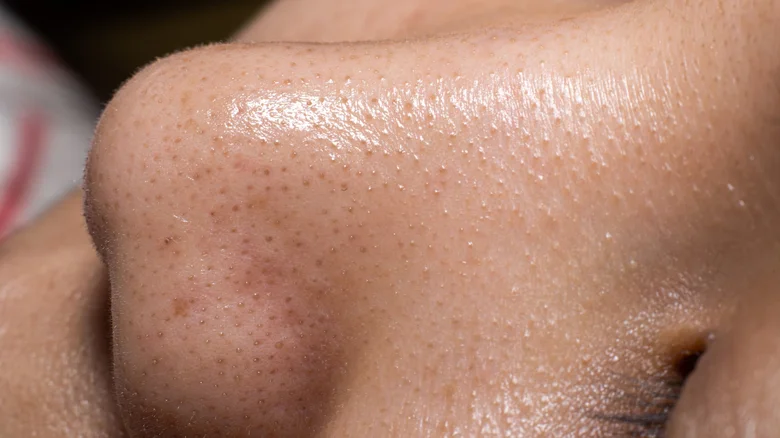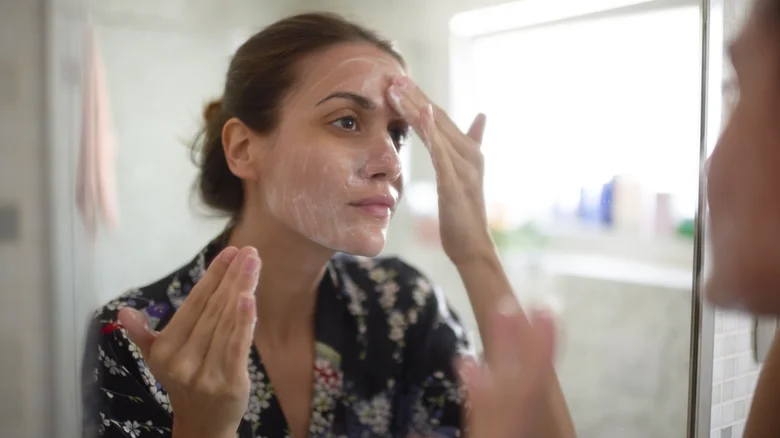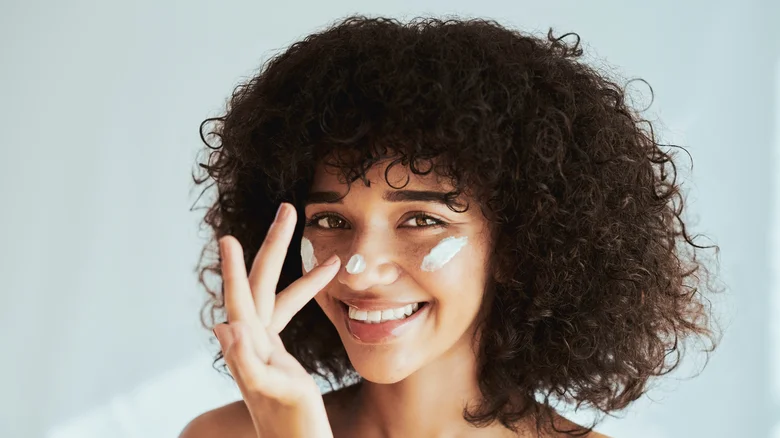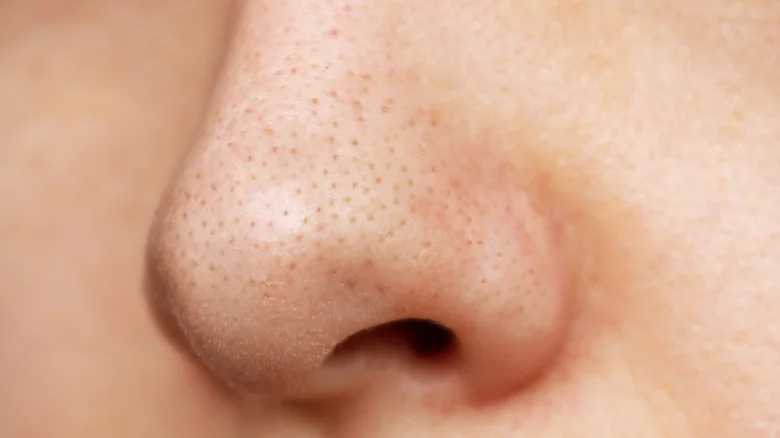If a few little black dots suddenly appear on your nose, you may be dealing with more than just your typical blackheads. Sebaceous filaments might be the cause of the black patches instead.
Glam spoke exclusively with Dr. Charles M.D., a board-certified top cosmetic dermatologist in New York City and the creator of MOMADerm. In this boutique membership-only aesthetic dermatology clinic, he treats patients with natural, subtle treatments to get the full scoop on controlling sebaceous filaments. Sebaceous filaments, sebum, or oil are pretty natural, so if you discover these black spots on your skin out of the blue, do not panic, says Dr Charles, who offers skincare tips and information on Instagram and TikTok. According to Dr Charles, They help keep your skin hydrated and move oil from your pores to the surface of your skin.
Sebaceous filaments are generally tiny and undetectable, but when the skin glands secrete too much sebum, they stand out more. Even while sebaceous filaments are benign, they might look unattractive. Fortunately, you may manage the appearance of sebaceous filaments on your nose, chin, forehead, or cheeks by incorporating certain items into your skincare regimen. Dr. Charles offers some advice on how to control those recalcitrant sebaceous filaments.
What distinguishes blackheads from sebaceous filaments?

Because of their comparable appearance as perceived by those without training, people frequently confuse sebaceous filaments and blackheads. Sebaceous filaments on the nose resemble uniformly sized tiny grey to blackish specks. Blackheads, a kind of acne, may be contrasted with what Dr. Charles said to Glam during our private conversation. Blackheads are caused by sebum or oil clogging pores. Generally speaking, blackheads are deeper in color and less evenly or symmetrically distributed.
On the other hand, the Cleveland Clinic does not classify sebaceous filaments as acne. They come in a variety of colors and are smaller than blackheads. They might seem dark grey or pale yellow, for example. Furthermore, unlike blackhead plugs, which stop oil from naturally flowing to the skin’s surface, sebaceous filaments do not prevent oil from doing so.
Sebaceous filaments are essential for the health and moisture of your skin, so it is better to leave them alone. It advises against it to push on them like a zit because this might leave scars via Healthline. On the other hand, if the sebaceous filaments turn into blackheads, therapy is advised.
Methods for controlling sebaceous filaments
One of the big myths on social media is getting rid of your pores, which Dr. Charles only disclosed to Glam. This can be hard to swallow because a significant part of internet marketing involves bombarding social media feeds with ads for pore-shrinking goods. Nevertheless, Dr. Charles said [S]sebaceous It’s normal for the skin to have filaments, and it’s impossible to get rid of them permanently.
Yet, we can all relate to the urge to eliminate those tiny black spots. According to Dr. Charles, the same beneficial treatments for blackheads will also help minimize the appearance of sebaceous filaments. Therefore, adjusting your skin care regimen to control your sebum production may reduce the size and visibility of sebaceous filaments, even if you cannot completely eradicate them. They will maintain the overabundance of sebum, reduce the visibility of the sebaceous filaments, and prevent the formation of blackheads. A double-edged sword in skincare!
Include salicylic acid in your daily regimen.

Using a product containing salicylic acid is one of the adjustments Dr. Charles suggested. In our exclusive conversation, Dr. Charles informed Glam that salicylic acid is a potent component in addressing both issues. A particular kind of beta hydroxy acid BHA called salicylic acid dissolves the dead skin cells by penetrating deeply into the pores via Healthline.
My go-to method for managing them is using a face cleanser with salicylic acid. However, let the active ingredient do its job on your nose by applying the wash to it for a full minute or two before lathering, Dr. Charles advised Glam. Lotions, ointments, and gels are other popular formulations that function similarly based on the strength of the concentration.
According to Healthline, the ideal time to apply salicylic acid to your skincare regimen is after cleaning and before serums or moisturizers for topical treatments or toners. Remember to use a moisturizer after a salicylic acid treatment to keep your skin from drying out and avoid sun damage, as chemical exfoliants typically leave your skin sensitive to UV rays.
Try some glycolic acid experiments.

Dr. Charles exclusively told Glam that Regular exfoliation with glycolic acid can be helpful beyond salicylic acid. Alpha hydroxy acids (AHAs), such as glycolic acid, exfoliate the dead skin cells that comprise the skin’s outermost layer.
According to the Cleveland Clinic, one major advantage of utilizing glycolic acid is that it functions as a humectant, that is it both draws and binds water. Glycolic acid, therefore, helps to keep your skin moisturized and exfoliates. Glycolic acid-containing products should thus not dry out your skin as much as salicylic acid-containing products.
Salicylic acid may be preferred by people with oily or acne-prone skin types, whereas glycolic acid is better at retaining moisture. Nevertheless, according to Medical News Today, sensitive skin might react to glycolic acid and develop symptoms including edema, irritation, and hyperpigmentation. For this reason you should always see your dermatologist before incorporating new components and products into your skincare regimen.
Consider using a retinoid

Dr. Charles recommended retinoids in addition to glycolic and salicylic acids to control sebaceous filaments. In our exclusive conversation, Dr. Charles said I also always recommend my patients use a retinoid for acne pores, skin texture, dark spots, and wrinkles.
Most people link retinoids to retinol and its benefits for preventing wrinkles. However, the anti-aging properties of this vitamin A-derived skincare product are not the only advantages it provides for the skin. Avoiding blocked pores through exfoliation and increased cell turnover retinoids like the sensitive skin-loving HPR can help reduce the appearance of sebaceous filaments via Healthline. Put another way, adding a retinoid to your regimen can assist in preventing your pores from becoming clogged with extra oil in the first place, which will help avoid the formation of blackheads and lessen the visibility of your sebaceous filaments.
Remember, though, that retinoids must used consistently to see effects. Applying sunscreen after using retinoid medication and preferably in the morning before leaving the house
will shield your skin from the sun’s radiation. When combining retinoids with other active substances in your skincare routine, you should be careful since they might irritate your skin. For example, it is best to utilize retinol and glycolic acid with caution as they don’t work well together.
“Regularity is essential” in controlling sebaceous filaments.

Sebaceous filaments cannot be eradicated since they are an inherent part of your skin. However, exfoliation and a good skin care regimen can help keep them in check and prevent them from becoming more prominent or noticeable. Reducing the appearance of sebaceous filaments requires consistency, Dr. Charles said exclusively to Glam. Remember, they are a regular part of your skin; your body will continually make sebum.
According to Dr. Charles, the dark/black color occurs when those components are oxidized. To put it another way, sebaceous filaments inside pores exposed to air are oxidized, darken in color, and become more conspicuous. Regularly using salicylic acid, glycolic acid, and retinoids to clean out your pores is essential.
He stated that you can reduce the appearance of these filaments. Retinoids and chemical exfoliants, when used regularly, can help keep sebum production going and stop blackheads from developing, lessening the look of sebaceous filaments on your cheeks, chin, and nose.

